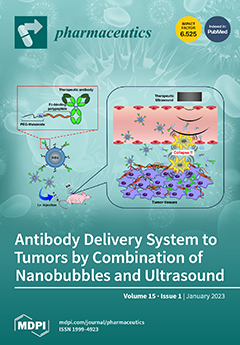(1) Background: Eudraguard
® Natural (EN) and Protect (EP) are polymers regulated for use in dietary supplements in the European Union and the United States to carry natural products, mask unpleasant smells and tastes, ameliorate product handling, and protect products from moisture, light,
[...] Read more.
(1) Background: Eudraguard
® Natural (EN) and Protect (EP) are polymers regulated for use in dietary supplements in the European Union and the United States to carry natural products, mask unpleasant smells and tastes, ameliorate product handling, and protect products from moisture, light, and oxidation. Moreover, EN and EP can control the release of encapsulated compounds. The aim of this work was the development, preparation, and control of Eudraguard
® spray-drying microparticles to obtain powders with easy handling and a stable dietary supplement containing a polar functional extract (SOE) from
Sorbus domestica L. leaves. (2) Methods: SOE was characterized using HPLC, NMR, FTIR, DSC, and SEM methods. Furthermore, the SOE’s antioxidant/free radical scavenging activity, α-glucosidase inhibition, MTT assay effect on viability in normal cells, and shelf life were evaluated in both the extract and final formulations. (3) Results: The data suggested that SOE, rich in flavonoids, is a bioactive and safe extract; however, from a technological point of view, it was sticky, difficult to handle, and had low aqueous solubility. Despite the fact that EN and EP may undergo changes with spray-drying, they effectively produced easy-to-handle micro-powders with a controlled release profile. Although EN had a weaker capability to coat SOE than EP, EN acted as a substrate that was able to swell, drawing in water and improving the extract solubility and dissolution/release; however, EP was also able to carry the extract and provide SOE with controlled release. (4) Conclusion: Both Eudraguard
® products were capable of carrying SOE and improving its antioxidant and α-glucosidase inhibition activities, as well as the extract stability and handling.
Full article






